Food is a basic need that millions of Americans struggle to afford. Oftentimes, people face hardships that could strike any of us, such as a family health emergency or an involuntary cutback in work hours, and could benefit from receiving some support to make ends meet.
The main public assistance program that helps prevent families from going hungry is called the Supplemental Nutrition Assistance Program, often known as SNAP. Let’s explore what SNAP is, whom it helps, and whether it can benefit you and your family.
What Is SNAP?
SNAP is a federal program geared at “ensuring access to nutritious food while helping to pave a pathway to long-term success.” An effective tool for providing assistance during economic downturns, SNAP is seen as the most important anti-hunger program in America. In fact, 12.4 percent of Americans rely on SNAP—and in some areas around the country, SNAP recipiency rates are more than double the national average.
SNAP is administered by the U.S. Department of Agriculture (USDA) Food and Nutrition Service (FNS), which also oversees 14 other federal nutrition assistance programs.
How SNAP Works
SNAP supplements the food budget of people facing food insecurity so they are able to buy healthy food. SNAP benefits are loaded onto an electronic benefit transfer (EBT) card, which works like a debit card. Program participants are able to use their card to purchase mostly any food for the household, including:
- Fruits and vegetables
- Meat
- Poultry
- Fish
- Dairy products
- Breads
- Cereals
SNAP prohibits the purchase of some items, including alcohol, cigarettes, supplements, pet food, and cleaning supplies.
There are approximately 260,000 retailers participating in SNAP nationwide. The SNAP Retailer Locator can be used to find all nearby authorized retailers where the EBT card can be used.
Many people look at SNAP as “the cornerstone of the nation’s nutrition safety net,” and the program has also been shown to have economic advantages for society as a whole. SNAP increases consumer spending in supermarkets and grocery stores across the nation, creating a cascading effect throughout the economy. According to a USDA Economic Research Service (ERS) analysis, $1 billion in new SNAP benefits during a slowing economy would result in an increase of $1.54 billion in gross domestic product (GDP). It would also generate an additional $32 million in income for U.S. agricultural industries.
Whom SNAP Helps
People from a variety of demographics rely on SNAP to purchase the healthy food they need to nourish their families and themselves. In New York State alone, where more than 13 percent of residents live in poverty, SNAP helped more than 2.5 million people in 2019—or 14 percent of the state’s population.
Here are a few quick facts on SNAP participation nationwide:
- 38 million people use SNAP benefits.
- 67 percent of SNAP participants are families with children.
- More than one-third of SNAP users are in families with members who are seniors and/or disabled.
- 1.3 million veterans rely on SNAP.
Are You Eligible?
To get SNAP benefits, you must meet certain requirements. Here are the general income limits through Sept. 30, 2020:
- For households of one person: $1,354 gross monthly income
- For households of two people: $1,832 gross monthly income
- For households of three people: $2,311 gross monthly income
- For households of four people: $2,790 gross monthly income
- For households of five people: $3,269 gross monthly income
Monthly SNAP allotments depend on factors such as household income and family size. Generally, SNAP participants must also meet work requirements that include:
- Applying for work
- Not voluntarily quitting a job or reducing hours
- Accepting a job if offered
- Participating in employment and training programs, if assigned by the state
Refer to the SNAP Eligibility FAQ page for more information.
How to Apply
To participate in SNAP, you must apply in the state where you currently live. Once you submit an application, your local SNAP office will let you know if you’re eligible for benefits within 30 days.
Contact your state agency to get more information and to apply for benefits.
The Bottom Line
At any given time, one in eight Americans rely on SNAP benefits to feed themselves and their families. SNAP gives millions of people the helping hand they need during hard times, which can be the difference between going hungry and having something to eat tonight. The program also provides educational assistance through SNAP-Ed to teach people how to shop for and cook healthy meals on a budget.
Feeding Westchester is dedicated to feeding those who are hungry in every town in the area. If you live in Westchester County and are looking for food assistance, use our agency locator tool to find your nearest food pantry, soup kitchen, shelter, or fresh market. You can also check out our Mobile Food Pantry schedule—we make stops throughout the county to offer food to any resident who’s hungry 5-6 days a week.







